This image shows three common ways that atmospheric pressure is measured - using a mercurial barometer, an aneroid barometer or a barograph.
Click on image for full size
Windows Original (Using images from FAA)
Barometer
A barometer is a weather instrument used to measure atmospheric pressure. The first barometer was invented in 1643 by Evangelista Torricelli, one of Galileo's assistants. This first barometer used mercury to measure the pressure. The atmosphere pushes downward on the mercury. If there is an increase in pressure, it forces the mercury to rise inside the glass tube and a higher measurement is shown. If atmospheric pressure lessens, downward force on the mercury lessens and the height of the mercury inside the tube lowers. A lower measurement would be shown. This type of instrument can be used in a lab or a weather station, but is not easy to move! Measurements from a mercury barometer are usually made in inches of mercury (in Hg).
An aneroid barometer can be used in place of a mercury barometer. It is easier to move and is often easier to read. This instrument contains sealed wafers that shrink or spread out depending on changes of atmospheric pressure. If atmospheric pressure is higher, the wafers will be squished together. If atmospheric pressure lessens, it allows the wafers to grow bigger. The changes in the wafers move a mechanical arm that shows higher or lower air pressure.
These days, many mechanical weather instruments have been replaced by electronic instruments that record atmospheric pressure onto a computer.
Atmospheric pressure can be measured and recorded in many different units. Usually high pressure means the weather will be clear, and low pressure usually means the weather will be stormy.
You might also be interested in:
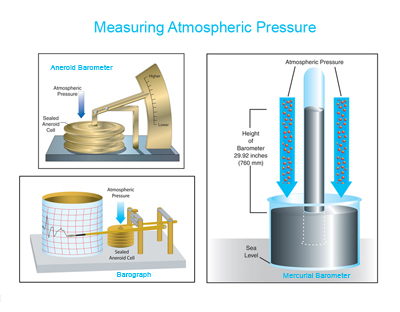
Even though we can't see air, it is real and is made of up many molecules which are zipping around at astonishing speeds. Air molecules travel about 1,090 mph at the surface of the Earth. That said, all
...more
Rainbows appear in the sky when there is bright sunlight and rain. Sunlight is known as visible or white light and is actually a mixture of colors. Rainbows result from the refraction and reflection of
...more
The Earth travels around the sun one full time per year. During this year, the seasons change depending on the amount of sunlight reaching the surface and the Earth's tilt as it revolves around the sun.
...more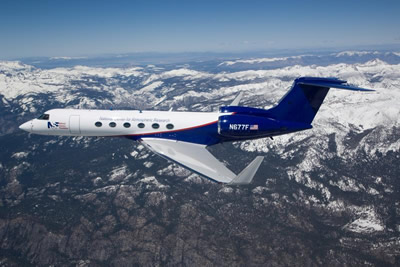
Scientists sometimes travel in specially outfitted airplanes in order to gather data about atmospheric conditions. These research aircraft have special inlet ports that bring air from the outside into
...more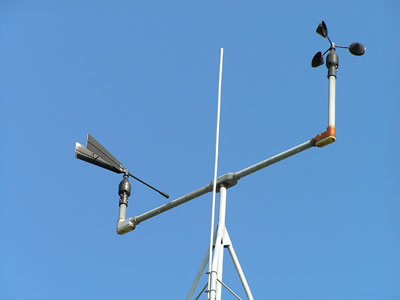
An anemometer is a weather instrument used to measure the wind (it can also be called a wind gauge). Anemometers can measure wind speed, wind direction, and other information like the largest gust of wind
...more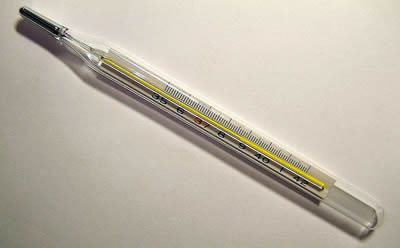
Thermometers measure temperature. "Thermo" means heat and "meter" means to measure. You can use a thermometer to measure the temperature of many things, including the temperature of
...more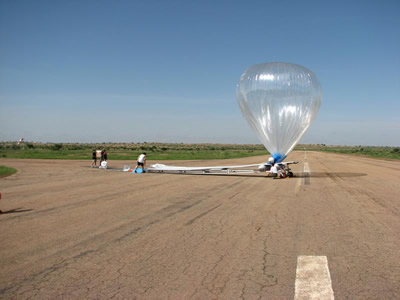
Weather balloons are used to carry weather instruments that measure temperature, pressure, humidity, and winds in the lowest few miles of the atmosphere. The balloons are made of rubber and weigh up to
...more














